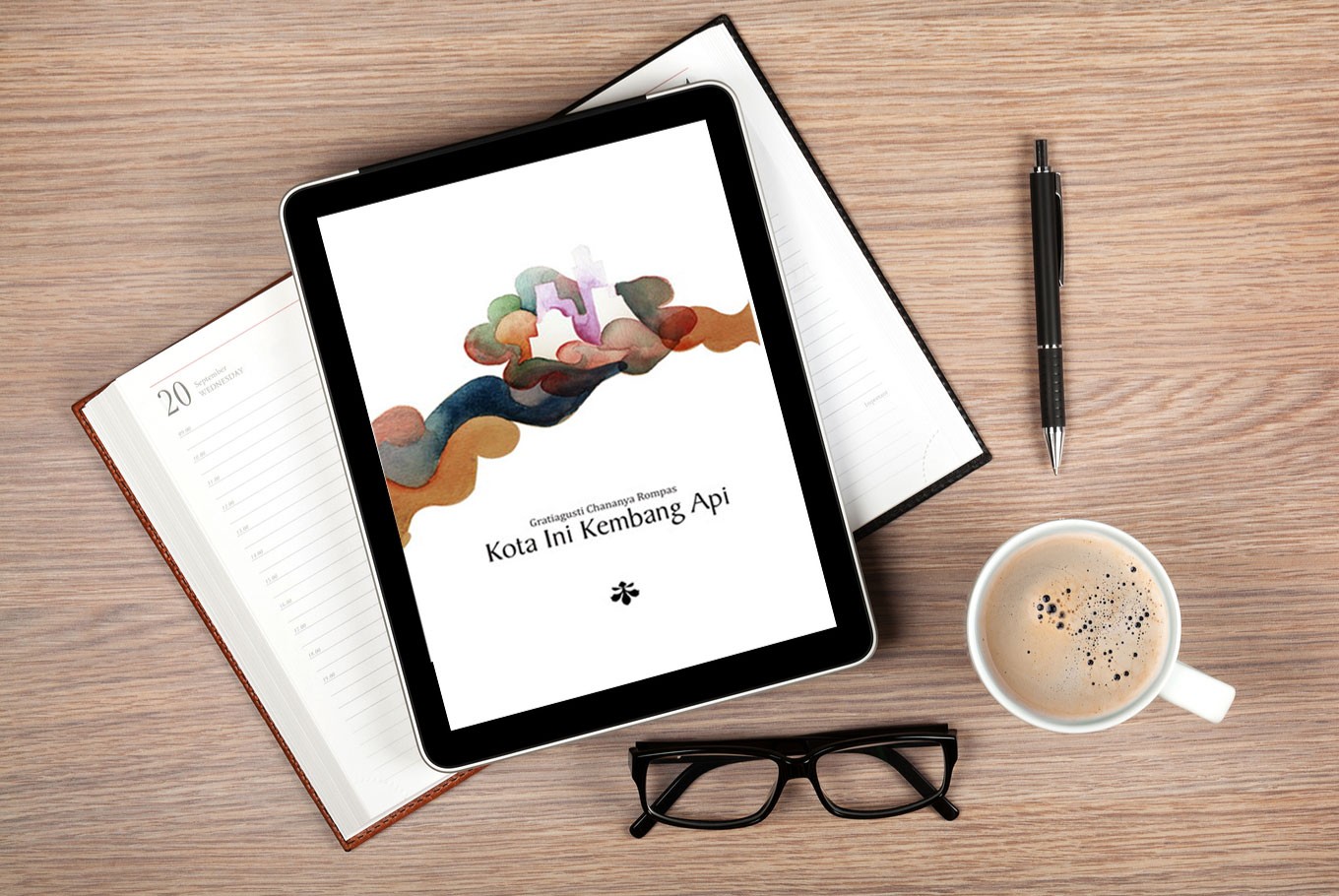Popular Reads
Top Results
Can't find what you're looking for?
View all search resultsPopular Reads
Top Results
Can't find what you're looking for?
View all search resultsGratiagusti Chananya Rompas describes life's irony through fireworks
Change text size
Gift Premium Articles
to Anyone
W
ritten by the co-founder of the BungaMatahari (BuMa) poetry community Gratiagusti Chananya “Anya” Rompas and published in 2016, Kota ini Kembang Api (This City is Fireworks) is said to be a poetry book that represents the irony of light and darkness in life.
Unlike other poets who usually use one of their poem’s titles as their book’s title, Anya said Kota ini Kembang Api was, in fact, part of her unnamed poem. “This happened after I read my manuscript and saw that I often explored darkness and light to describe setting or emotion in each poem,” she told The Jakarta Post via email. “I feel there are many ways to play with irony between light and darkness, and fireworks certainly represent this.”
“Fireworks usually show up in crowded and festive events, but actually its beauty of light can go out fast,” Anya stated, adding that Kota ini Kembang Api was her first poetry book. “This reminds me of human’s life, meaning that we actually live in this world for a while, and then perish.”
Those who usually read poetry in a structured form may find the book different. Take a look at Hujan (Rain), for example, where the poem is placed in the middle of the page, or Mabuk Lampu (Drunk of Light), where the words are arranged at the bottom of the page, therefore readers need to turn the book upside down in order to absorb the poetry. In addition to that, in Pendar Pendar Cahaya Menyelinap Ruang Mata (Lights Sneaking the Eyes Spaces), each word is unified with each other, creating sentences that made the poem.
(Read also: Seno Gumira Ajidarma: No rest for the wicked)
 The cover of "Kota ini Kembang Api."(Shutterstock/File)
The cover of "Kota ini Kembang Api."(Shutterstock/File)
Born in Jakarta, Anya recalled her time as an English literature student at the University of Indonesia (UI), where she read poems of different themes and form, as well as learned various elements of poetry. “At that time I just couldn’t wait to apply them in my poems,” she said. “I realized that every letter, word, line, punctuation and how those elements are placed can add meaning into a poem […]. For me, a successful poem should be able to conceptualize what its writer wants to convey.”
However, Anya believed what she had done for Kota ini Kembang Api was not brand new. “What I had done is not a new thing in history and tradition of poetry,” she said. “I was just trying to implement what I had found, but I also wanted to add different touch, something that comes from both my heart and mind.”
Kota ini Kembang Api was initially a collection of poems that had been launched at the Ubud Writers & Readers Festival in 2008. The book itself consists of poems that had been written from 2003 to 2008.
At the Sukaria Kembang Api (Fun Fireworks) event in November 2016, some of the poems within the book were musicalized by musicians such as Gabriel Mayo, Junior Soemantri and other notable names. Some of Anya's poems have also been published in newspapers, magazines and several anthologies.
“What I realize about myself after the manuscript was finished is how I [perceived] time as something that moves like spiral, not linear,” Anya stated, adding that she is currently preparing for her second poetry book. (kes)











